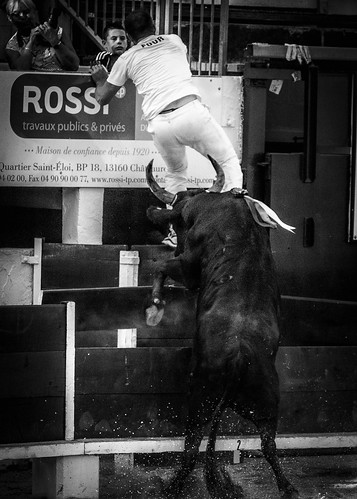Frozen colonic tissue (200 mg) was lysed in 500 mL RIPA buffer with a mortar and pestle-kind rotary homogenizer. Protein focus was measured in the lysate, using the BCA technique [forty three]. Polyamine levels in the tissue samples had been decided by precolumn dansylation reverse stage HPLC as reported beforehand [487-52-5 distributor twenty five,forty three,45].
Colon tissues have been reserved for protein examination as explained over. The tissues ended up lysed in RIPA buffer with a mortar and pestle-sort rotary homogenizer, and utilised for Luminex assay as explained [forty eight]. The lysates ended up then assessed by a BioPlexH (BioRad, Hercules, CA) multiplex bead-primarily based antibody detection package according to the manufacturer’s protocols [49]. Protein concentration was calculated in the lysate using the BCA method as explained [43].
Mice had been given an intraperitoneal injection of 5-bromo-29deoxyuridine (BrdU a hundred and fifty mL of a 10 mg/mL solution) 90 min prior to sacrifice. The colon was received for epithelial mobile isolation and staining for E-cadherin as an epithelial mobile marker as beforehand explained [36]. The isolated epithelial cells have been then stained for BrdU using the APC BrdU Flow Package (BD Biosciences, San Jose, CA) for every the manufacturer’s protocols. The percentage of BrdU positive, E-cadherin optimistic cells was assessed by flow cytometry.
RNA samples had been well prepared from colon tissues as explained previously mentioned. Every single sample was quantified on the Nanodrop ND-1000 Spectrophotometer (ThermoFisher Scientific, Willmington, DE) according to the manufacturer’s protocols and as explained in Supplemental Strategies (Approaches S1). Sample integrity was assessed (Approaches S1) utilizing an Agilent 2100 Bioanalyzer (Agilent Systems, Santa Clara, CA) according to the manufacturer’s protocols. All of our samples had an RNA Integrity Variety (RIN) of .nine (scale 00). The reactions, hybridization, and information processing were carried out in the Vanderbilt Genome Sciences Resource using the Ambion Entire Transcript Reaction package following the manufacturer’s protocol. 3 biologic replicates ended up profiled for every single treatment group. [50,51]. Further information about the microarray tactics are supplied in Methods S1.
Colonic epithelial cells were isolated as previously mentioned. Migration of freshly isolated mouse colonic epithelial cells was measured using a migration kit from 17135238Chemicon Global (Millipore, Billerica, MA QCM Chemotaxis 8 mm 96-well Mobile Migration Assay), according to the manufacturer’s  recommendations. Briefly, two.56104 cells had been plated in ninety six-nicely migration chambers. L-Arg (one.6 mM) was extra to the medium in the feeder trays underlying the cell chambers, as well as in the migration chambers. Plates have been incubated for 24 h at 37uC in a CO2 incubator. Cells and medium from the leading facet of the migration chambers had been discarded and the migration chamber plates ended up positioned on best of new ninety six-well feeder trays that contains a hundred and fifty mL of mobile detachment resolution, and incubated for 30 min at 37uC. CyQuant GR Dye was diluted with lysis buffer and added to each and every effectively of the feeder trays, and incubated for 15 min at area temperature. a hundred and fifty mL of the combination from the feeder trays was transferred to new black ninety six-nicely plates and fluorescence was calculated at 480 nm and 520 nm in a BioTek Synergy four plate reader.Hierarchical clustering of worldwide gene expression designs was performed. First, the 12 overall samples were clustered using total linkage examination by the expression values of the probes to analyze the inter- and intra-group interactions. This information was used to visually exhibit the associations primarily based on all the probes existing.
recommendations. Briefly, two.56104 cells had been plated in ninety six-nicely migration chambers. L-Arg (one.6 mM) was extra to the medium in the feeder trays underlying the cell chambers, as well as in the migration chambers. Plates have been incubated for 24 h at 37uC in a CO2 incubator. Cells and medium from the leading facet of the migration chambers had been discarded and the migration chamber plates ended up positioned on best of new ninety six-well feeder trays that contains a hundred and fifty mL of mobile detachment resolution, and incubated for 30 min at 37uC. CyQuant GR Dye was diluted with lysis buffer and added to each and every effectively of the feeder trays, and incubated for 15 min at area temperature. a hundred and fifty mL of the combination from the feeder trays was transferred to new black ninety six-nicely plates and fluorescence was calculated at 480 nm and 520 nm in a BioTek Synergy four plate reader.Hierarchical clustering of worldwide gene expression designs was performed. First, the 12 overall samples were clustered using total linkage examination by the expression values of the probes to analyze the inter- and intra-group interactions. This information was used to visually exhibit the associations primarily based on all the probes existing.
